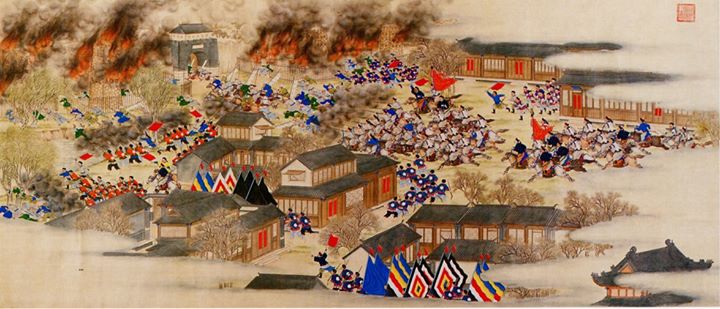26 December 1872
Panthay Rebellion of 1872
room China
people King Mindon Du Wenxiu
On 26 December 1872, the 16-year long "Panthay Rebellion" was crushed with the recapture of Dali and the execution of the Panthay leader, Du Wenxiu. When he was captured, Du Wenxiu took an overdose of opium but he was decapitated nonetheless. His head was encased in honey and sent to the Emperor as a gift. Tens of thousands of Panthay were slaughtered. Hundreds of thousands in total likely died as a result of the rebellion. Thousands more found refuge in the Shan states and Mandalay where their descendants still live today.

An illustration showing the final Manchu Chinese assault on Dali that ended the 16-year-long Panthay Rebellion in 1872.
In the mid-19th century, Yunnan was comprised of three main ethnic groups: the various "native" peoples, such as the Yi (who speak a language very similar to Burmese); the Muslim Panthay or Hui, whose ancestors were mainly Turkish soldiers and officials brought by the Mongols from Central Asia in the 13th century; and recent Han Chinese settlers. The Burmese tayoke, for Chinese, may have originally referred to this Turkish population.
The Panthay Rebellion was a rebellion of the Panthay against the Chinese and the Manchu regime in Beijing. Du Wenxiu, styled himself the "Sultan of Dali" and even sent an embassy to London asking for diplomatic recognition. This was during the much bigger Taiping Rebellion against the Manchus. King Mindon was sympathetic to the Panthay but was afraid of the Chinese and so did not support Du Wenxiu in any way. The collapse of Yunnan-Burma trade was catastrophic to the Burmese economy and was, arguably, one of the reasons for the collapse of the kingdom in the 1880s - a lesson in how events in China can easily affect politics in Burma.
Explore more in Late Konbaung Myanmar and the English Wars (1824-1885AD)